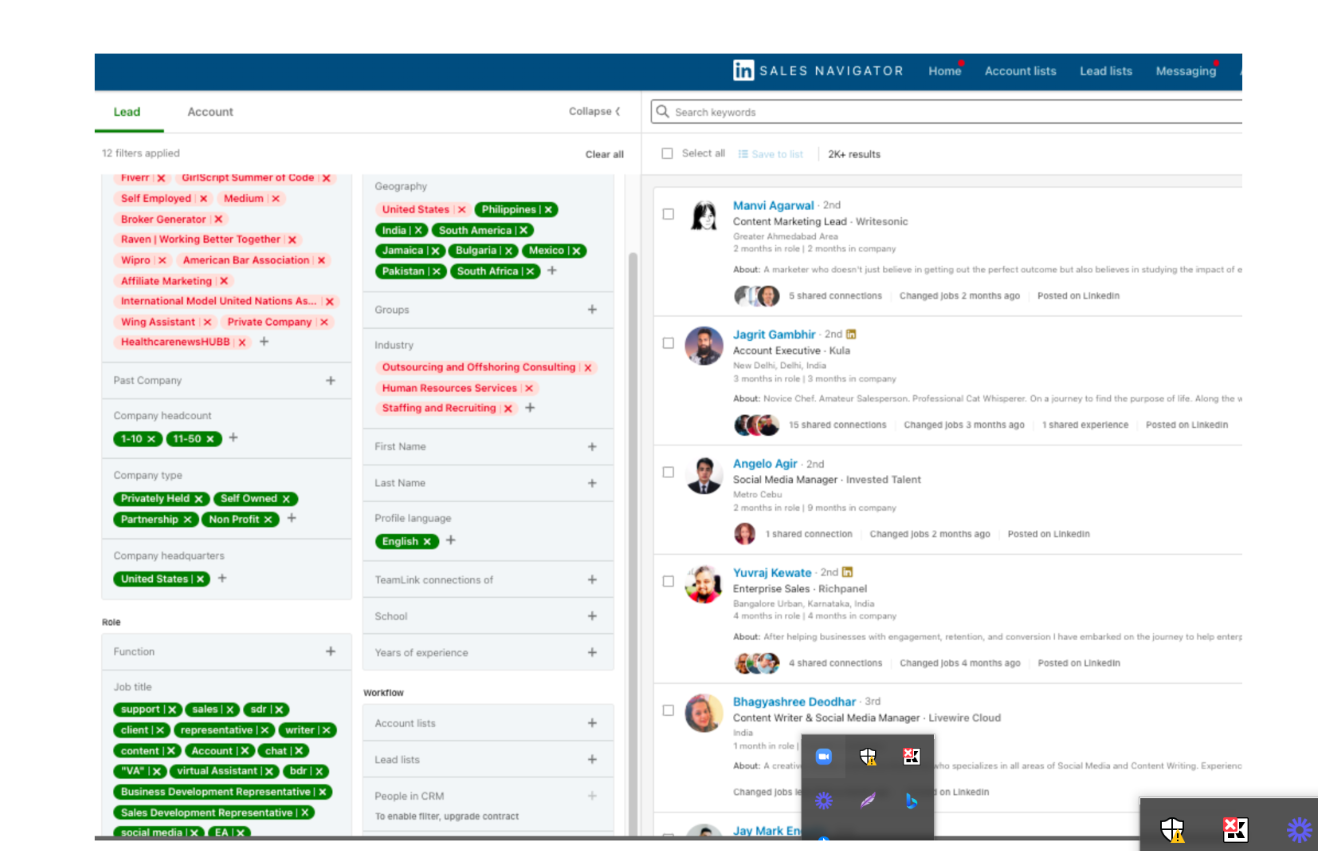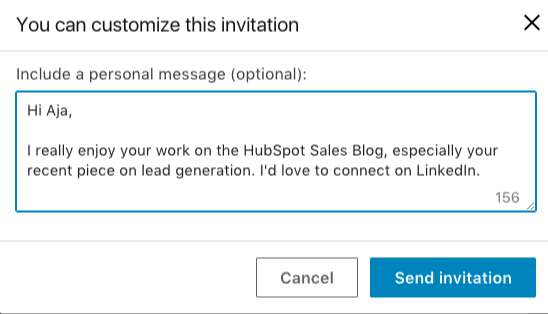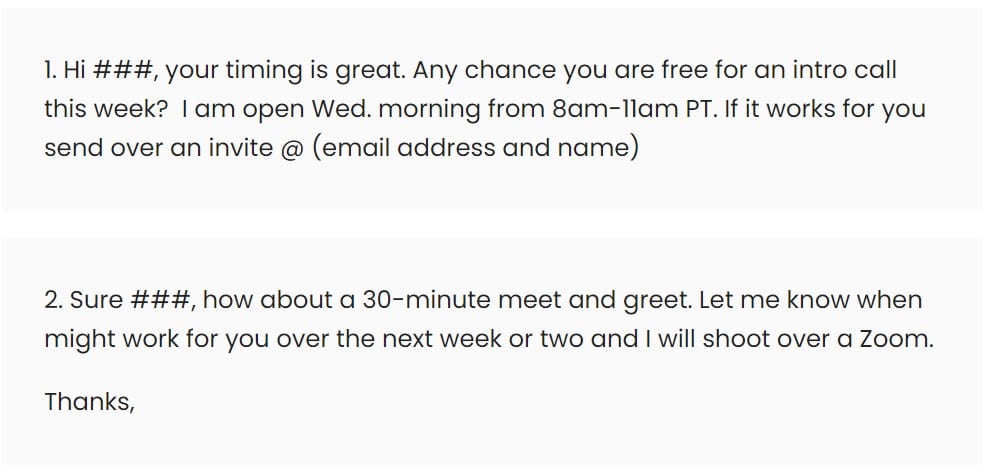If you’re a busy founder and don’t have the time to book sales meetings yourself, or you don’t have an in-house sales team, you might want to consider hiring a B2B appointment-setting company.
Appointment-setting companies will schedule appointments or meetings for businesses with potential clients.
This article will share what appointment setting is, as well as everything you need to know about it. And as a bonus, we have included the appointment setting strategy we use to generate 1 lead a day for our clients.
(If you use the same strategy, we’re pretty sure you will be able to generate at least 1 qualified sales lead per day for your company. Or you could just hop on a free 15-minute strategy call with Salesbread, and we can help you find qualified appointments.)
What is appointment setting?
B2B appointment setting is basically the process of finding and booking sales-qualified leads for your company.
Appointment setters will need to engage with your ideal prospects and nurture potential clients to schedule meetings, presentations, or demos.
This process will contribute to filling your sales pipeline with qualified leads and speeding up the sales cycle. All you have to do is hop on the call and close the sale.
What does the typical B2B appointment setting process look like?

Step 1: Sales Prospecting
Sales prospecting in B2B involves finding and reaching out to potential business clients.
This starts with creating ideal customer profiles (ICP) and generating leads through methods like cold calls, emails, LinkedIn outreach and networking.
It’s important to note that personalized outreach is imperative for generating qualified sales leads and building relationships; which in turn will lead to the identification of promising sales opportunities.
Step 2: Lead Qualification
Lead qualification is the process of assessing potential customers to see if they will become paying clients.
This involves looking at factors like their:
- Interest level
- Their budget
- Whether or not they have buying power (Are they the decision-maker?)
- And how well they fit the ideal customer profile.
This is also known as lead scoring, which helps sales and marketing teams focus on the leads most likely to convert into a sale.
Step 3: Lead Nurturing
Lead nurturing involves building and keeping relationships with potential customers over time.
This is done through personalized and consistent communication.
So, think about which channels your audience spends most of their time on.
You could reach out to them via:
- LinkedIn messaging
- SMS
- Cold calling
- Other social media channels, like Instagram or Twitter.
Once you have established which channels you will be using, you will then have to craft outreach messages or calling scripts that are NOT salesy.
Think of compelling value propositions and be sure to include personalized outreach techniques.
The goal is to engage and educate leads, addressing their needs and concerns at various stages of their buying journey.
If you can provide valuable information and stay in the minds of buyers, you will increase the chances that prospects will choose your products or services when ready to buy.
Step 4: Securing Sales Meetings
Securing sales meetings is a step where potential clients agree to interact with sales representatives. This requires excellent communication, persuasion skills and in-depth knowledge of your product or service.
The process includes:
- Presenting the value of the product or service
- Addressing the client’s needs
- And overcoming any objections the potential client might have
These meetings are vital as they provide an opportunity to discuss offerings in detail, build rapport, and move prospects closer to making a purchase decision, ultimately driving business growth.
Our B2B appointment setting strategy that generates 1 lead a day
The process above is the typical b2b sales process. But at Salesbread, we do this slightly differently. This process allows us to generate 1 qualified sales lead per day for our clients, and book them appointments.
We focus on LinkedIn and cold email outreach. The approach below has helped us generate close to 7000 qualified sales leads for our clients.
You can read some case studies below:
- Is Lead Generation Worth It? Case Study – 67 Qualified Leads in 8 Weeks
- B2B SaaS Growth Strategy – How We Generated 183 Sales Leads in 130 Business Days
- Glasswall Solutions Case Study – How Salesbread Got a 41.66% Positive Reply Rate in 40 Days
NOTE: Appointment setting has this extra step…
It’s important to note that when it comes to appointment setting, there’s one more step in the lead generation process. And the best approach is to NOT reach out to your target audience directly and share your calendar link in the first message.
Why?
Because this is going to lead to really low reply rates unless you happen to find yourself tackling an old problem in an innovative way that really addresses an important pain point.
Here’s an example:
Think about using Chat GTP to answer a customer’s support ticket; If you sent that message 4 years ago, it would absolutely have gotten interest and worked to have booked calls.
But if you’re not offering something new to the marketplace, that’s not the best way to do appointment setting.
So what we’ve found that works best is, we first send out a LinkedIn message to gauge the interest of prospects.
Appointment setting has 2 parts to it.
Part 1
Gauge the interest of prospects; You could send an email that says: “Is your company currently facing {{this challenge}}?”
And those that say “yes”, are obviously dealing with that specific pain point.
You could even go a step further and ask if they would be interested in seeing a case study on how a similar company solved this specific problem.
Part 2
Would be following up with prospects who said “yes” to a case study and see if they would be interested in hopping on a call to help their company achieve similar results.
So, with appointment setting you’re going to be doing a lot of follow-up efforts where you check in with the prospects and share calendar links to book calls.
Now that you know the secret recipe, let’s go through our step-by-step process.
Step 1: Build a prospect list based on current buyer’s data
The number one most important factor for successful B2B appointment setting is understanding and finding the right target audience.
This is where prospecting and in-depth list-building come in.
You can’t have a basic list and expect to book 20+ leads per month.
The video below goes into detail on how we build prospecting lists for our clients.
We encourage salespeople to have a look at WHO has bought their company’s products or services within the past 6 months.
Once you have this data, you can then analyze it by looking for patterns between buyers.
This will help you build look-alike lists of accounts to go after.
For example, ask yourself:
-
Are all buying customers located in the same area?
-
How big are these companies? Greater than 200 employees or fewer than 20?
-
Have they recently been funded?
-
Do they have a marketing budget? What are they spending it on? Facebook ads? PPC?
-
Which industries are they in? Fintech? Health and wellness?
-
Who is the decision maker?
Once you find a pattern, it’s much easier to build look alike lists.
Bonus: Read this article: How To Build A Winning Sales Prospecting List In 7 Days
Step 2: Plug the list into LinkedIn Sales Navigator and connect with the right people.

The next step is filtering your list of accounts through Linkedin Sales Navigator.
We filter our list by second-degree connections and by those who have recently posted something on LinkedIn within the last 30 days.
Why?
Stats have shown that if someone is already in your 2nd degree network, they will more likely accept your connection request.
The reason is because you already have a shared commonality. They have already accepted someone like you in the past.
And why do we filter by recently posted?
Well, this ensures that the prospects you are reaching out to are active on the platform, and don’t miss your message. If the prospect isn’t active on Linkedin, we will then add them to an email or SMS outreach campaign.
But you could also give them a sales call, or reach out to them on a different platform.
Step 3: Next, write personalized LinkedIn outreach messages to gauge interest

As mentioned above, you would first want to gauge interest in whether or not an individual is experiencing a specific pain point at a company.
But in order to capture their attention, you would need to use personalization in your messages.
(Did you know that Salebread has a full-time research and personalization expert on their marketing team? This means that all they do is research each prospect and write a personalized message for them.)
Here are some examples for personalized connection request messages:
1. Hey {{Name}}, since we’re both working in {{commercial real estate}} here in {{San Diego}}, I’d like to invite you to share my network here on LI.
2. {{Name}}, I’m looking to connect with like-minded professionals who are on the {{revenue-generating}} side of things. Let’s connect?
3. Hi {{Name}}, I’m looking to expand my network with fellow business owners in the {{HR Tech}} industry. Looking forward to learning more about what you do and see if there’s any way we can support each other.
4. {{Name}} LinkedIn showed me your profile multiple times now, so I checked what you do. I really like your {{sales posts}} and would like to connect with you here.
5. Hey {{Name}} I hope your week is off to a great start, since we both work in the {{HR/Employee Experience}} field together, are you open to connecting?{{My background is in employee retention, happy to share insights anytime.}}
6. Listening to your podcast now & subscribed! Wanted to connect and say thank you for sharing your insights – I’m using them to help land a lead gen job. Cheers,{{Signature}}
Here are some personalized email examples that we use to gauge interest:
(list some examples)
We use a method called CCQ that helps us write these kinds of messages.
CCQ stands for:
-
Compliment
-
Commonalities
-
Questions
We will either find something to compliment the prospect on, mention a commonality, or ask them a question.
Where do we find this information?
A simple scroll through their LinkedIn page should suffice. You could also Google their name and see if anything specific pops up.
When you throw something personal about a prospect into a message, it’s very hard for them to ignore it.
Personalization creates curiosity and engagement.
It helps the prospect see that there is a real person on the other side of the screen and not just some robot, sending out thousands of the same messages to people.
Because of this, our lead rate is about 1 lead per day for each client.
(Need some free personalized LinkedIn connection templates? Go here .)
Step 4: Follow up consistently with those who showed interest and asked for a booked a meeting
Once a prospect has shown interest, we will then follow up with them and ask if scheduling a meeting to discuss the solution to their pain points will be worth a quick call.
In these follow-up messages, our sales reps always ask for a meeting.
Here are some ways in which we do so:
-
How about a quick call to discuss this?
-
Would a quick 10-minute call work for you? (time and date)
-
Send me your calendar link and I will book an appointment to chat.
-
Can I arrange with your P.A to book a quick call?
Here are some Recent replies we have Received from prospects.


What challenges might B2B appointment setters face?
B2B appointment setters might face the following challenges:
- Finding the right decision-makers
- Facing rejection
- Prospective clients deviating from the topic
- Writing personalized messages, and…
- Optimizing the appointment-setting process for more sales;
This might include some a/b testing, such as seeing which prospect list or message works best.
What happens when a prospect wants to schedule a meeting?
If prospects show an interest in chatting more, our SDRs will share our client’s calendar link (usually Calendly) with prospects to set meetings.
The only thing that our client has to do, is show up for the meeting and close the sale.
Other ways in which B2B appointment-setting services can generate leads
Inbound Marketing
Inbound marketing involves attracting prospects through valuable content, SEO, and providing helpful resources.
Outbound methods include direct outreach through emails, calls, and social media targeting.
Using a multichannel approach such as content marketing, email campaigns, social media engagement, and targeted outreach, will help you reach and engage with potential clients at various touchpoints in the buying journey. So don’t be afraid to try more than one lead generation method.
Should you Outsource Appointment Setting Services?
There are various pros and cons of outsourcing B2B appointment-setting services.
For example, outsourcing pros could include:
Specialized expertise:
When you outsource to an appointment-setting agency, you can be sure that they have the knowledge and experience to generate qualified prospects.
Cost-effectiveness:
Hiring an agency is more cost-effective initially, compared to starting your own in-house appointment-setting team.
For example, the average salary of one appointment setter in the US is between $22,000 and $45,000 annually; This excludes things like health insurance, office equipment, and lead gen tools.
Whereas, an appointment-setting agency could cost you anything between $50 to $500 per appointment or $15 to $40 per hour, depending on who and which option you choose.
At Salesbread we charge $3000 per month with a once-off set up fee. We have no locked-in contracts.
We also suggest that if you do hire an appointment setting service, don’t go for the “pay per appointment” option.
This can be costly, and nothing guarantees that you will be hopping on a qualified sales appointment.
Scalability
If the agency has an excellent strategy in place, you can be sure that your business will grow.
At Salesbread our clients expect 1 lead per day.
Our lead generation campaigns have fueled the growth of ProdPad, Cleargov, ChatLingual, eKomi, OneUp, Recurly, and VPN.com.
When it comes to choosing the right sales appointment agency, take a look at their expertise in the industry, their track record of success, alignment with your business goals, transparency in their operations, and adherence to quality standards.
Also, ask them if they have been able to book appointments in your industry and whether they have some in-depth case studies to share with you.
Read this article: 10 Questions to Ask Before Choosing a Cold Email Agency
Looking for the right B2B appointment-setting agency? Get in touch below.
By partnering up with Salesbread, you can sleep soundly knowing that you can expect 1 qualified sales lead per day.
Because our lead generation process includes ultra-refined prospecting lists and expert personalization, we have managed to book close to 7000 sales-qualified leads in the past 24 months for our clients.
If you don’t want to worry about this process yourself and would like to just focus on closing deals , book a free 15-minute strategy call below.
